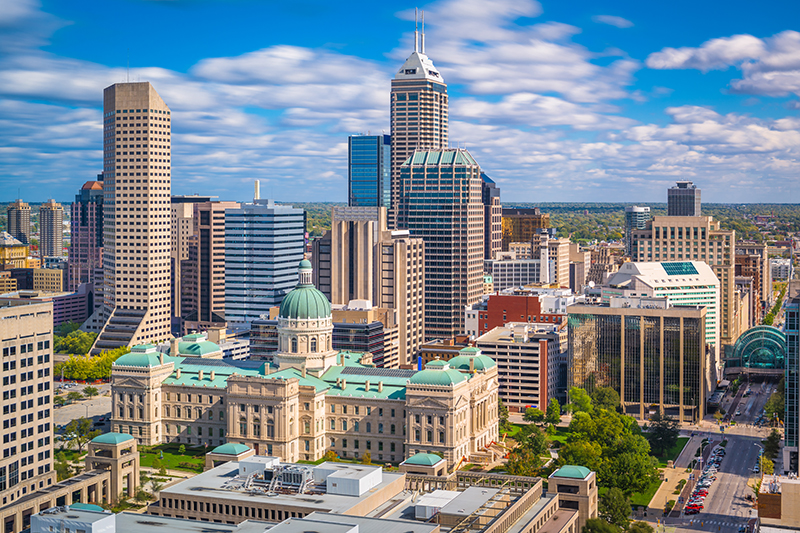Market Spotlight: Indianapolis Sees Highest Rent Growth in U.S.

- Indianapolis multifamily rent growth topped the rankings in Q3 2020.
- Vacancy rates remained near record lows for the market.
- The Indianapolis metro area’s economy has performed better than most during the COVID-19 crisis, with unemployment recovering to near pre-pandemic levels.
The Indianapolis multifamily market experienced the nation’s highest rent growth during the third quarter of 2020 and the vacancy remained near record lows. Employment levels recovered to near pre-pandemic levels, driven by a developing technology industry and strong logistics base. While the course of the COVID-19 pandemic will be the ultimate driver of short-term growth, Indianapolis is well-positioned for long-term success.
Rent Growth Continues
According to Moody’s Analytics REIS, effective rent in Indianapolis grew 3.7% year-over-year, the highest rate among major markets in the country. This was well higher than the U.S. overall rate which fell -1.2% during that time. The strong rent growth was not a new trend. Indianapolis outgrew the U.S. overall for 2019 also, at 4.3% vs. 3.7%. Asking rent for Class A properties increased 3.3% year-over-year, compared to 2.2% for Class B/C, going against the national trend of rents in high-end properties falling faster than workforce units.
The market vacancy rate was at historic lows coming into the pandemic, reaching 5.0% at the end of 2019. By the end of the third quarter of 2020, the rate had increased to only 5.2%, although remaining slightly higher than the U.S. overall rate of 5.0%. The vacancy rate for Class A properties increased to 5.8% from 5.4% at year end, while the Class B/C rate improved to 4.4% from 4.5%, following the national trend of stronger workforce housing performance.
Economy Remains Strong
The Indianapolis metro area’s relatively affordable housing prices and cost of doing business has led to positive migration trends over the last few years. The already strong distribution sector has been further boosted by the growth in e-commerce during the pandemic, and the developing technology sector has provided a well-educated workforce. Additionally, the area’s low reliance on hospitality tourism has shielded its exposure to the recession, although the public sector has shown weakness.
According to the REIS COVID-19 impact tracker, the Indianapolis economy has performed better than most major markets during the coronavirus crisis, and the forecast calls for continued strong job growth.
The U.S. Bureau of Labor Statistics (BLS) reported that payroll employment for the Indianapolis metro area had nearly recovered to pre-pandemic levels by the end of October, down only 0.6% since February, or 6,400 jobs. For the U.S. overall, there were 10.1 million fewer jobs at the end of October compared to February, down 6.6%.
The BLS also reported that the unemployment rate for the area was 4.9%, approaching the the level prior to the COVID-19 outbreak of 2.8%, and well below the peak of 13.3%. As a comparison, the unemployment rate for the U.S. overall was 6.9% at the end of October, and peaked at 14.7%.
Outlook
As with most markets in the U.S., the course of the pandemic will determine the outlook for Indianapolis. However, the local economy has low exposure to the industries that have been hit hardest. The multifamily market entered the pandemic on a strong note and the area’s population growth, well-educated labor pool and growing high-tech industries will drive a fast recovery from the COVID-19 slowdown.
Interested in the multifamily real estate investment market? Contact Arbor today to learn about our array of multifamily financing options and view our other market research on the Chatter blog.

